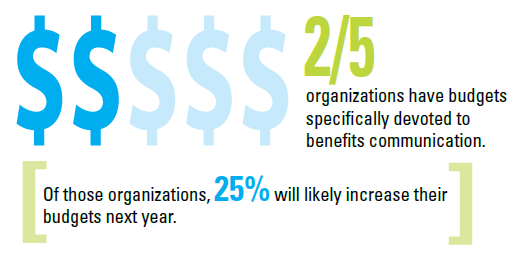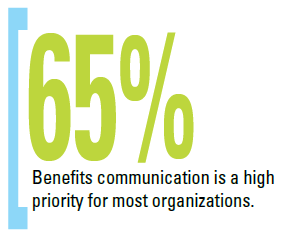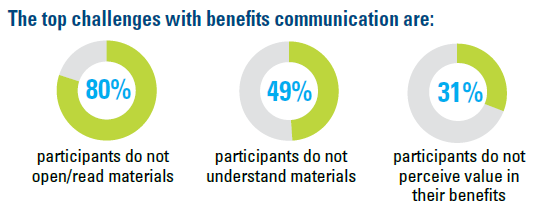This article was published on September 16, 2019 on Hartford Business written by Wendy Pierman Mitzel. Photo source is Hartford Business Journal.
1st Place | Category: 1,000 or fewer employees
Diversified Group
Headquarters: Marlborough
Industry: Health insurance and benefits administration
Top Executive: Brooks T. Goodison, President
Diversified Group not only offers its customers a worksite wellness plan, it offers programs to its own employees as well.
Company leaders say creating a healthy workplace translates to happier employees, high retention rates and increased customer service.
 According to Alison Searles, Diversified Group’s client service specialist, continuity and accessibility are key to defining the culture of wellness within the health insurance firm. Workers can take exercise classes during lunch breaks and organize their schedules in a way that allows them to attend monthly programs like meditation, wellness coaching and fitness challenges.
According to Alison Searles, Diversified Group’s client service specialist, continuity and accessibility are key to defining the culture of wellness within the health insurance firm. Workers can take exercise classes during lunch breaks and organize their schedules in a way that allows them to attend monthly programs like meditation, wellness coaching and fitness challenges.
“Employees want to be healthy and just a little push from Diversified Group has helped some individuals make huge strides when it comes to health,” she explained. “When employees come back from their spin class, yoga or meditation session, they feel a little more clear-headed, a little more energized and ready to tackle the rest of their day as opposed to hitting that 2 p.m. crash.”
Employees can choose from activities led by educated and trained professionals and held on a regular basis. They include weekly fitness classes such as yoga, spinning and strength; monthly meditation sessions; monthly wellness-focused activities; quarterly wellness challenges; and on-demand health coaching or dietetic counseling.
Diversified Group provides programs regularly so employees make wellness part of their everyday routine, said Searles.
“The goal of our program is to instill the concept that wellness is a lifelong priority,” she added.
Targeting the needs and wants of some 55 employees is another important part of offering the right programs to gain participation. Recently, Diversified Group began instruction in yoga nidra, also referred to as sleep yoga, on the suggestion of the holistic health specialist.
Diversified Group also has a robust incentive campaign that offers small rewards for meeting certain benchmarks and larger ones for commitments spanning the entire year.
“Rewards initially motivate employees to participate in our wellness challenges and activities, but many have recognized that they truly feel better when they participate and this encourages them to keep going,” Searles said. “We have quite a few people who now lead healthy lifestyles simply because they learned how great being healthy feels.”
The program is communicated to employees through a new wellness portal. In addition, a yearly aggregate evaluation, along with satisfaction surveys and one-on-one meetings, allow for adjustments and improvements.
Click here to view the full list of HBJ’s 2019 Healthiest Employers awards.








 Nearly two in five surveyed organizations (38%) have budgets specifically devoted to benefits communication, and one-quarter of these organizations (25%) likely will increase their budgets next year. A few organizations shared the size of their benefits communications budgets, which ranged from 3% to 10% of the total benefits budget.
Nearly two in five surveyed organizations (38%) have budgets specifically devoted to benefits communication, and one-quarter of these organizations (25%) likely will increase their budgets next year. A few organizations shared the size of their benefits communications budgets, which ranged from 3% to 10% of the total benefits budget. Survey findings reveal that 65% of organizations regard benefits communication as a high priority (28% very high and 36% somewhat high). However, the amount of time spent on various benefits communication efforts doesn’t always match up with organizations’ priorities. For example, 89% of organizations report helping participants understand and use their benefits as a top goal, but only 70% say that effort occupies most of their time. Fifty-two percent cite getting individuals to understand the value of benefits as a top goal, but 48% say it takes most of their time. Helping participants make smarter personal health and/or finance decisions is the third most cited goal (49%), with 30% saying it occupies most of their time. Data show how reactively responding to participant questions (57%) seems to be stealing time from organizations’ more proactive benefits communication goals.
Survey findings reveal that 65% of organizations regard benefits communication as a high priority (28% very high and 36% somewhat high). However, the amount of time spent on various benefits communication efforts doesn’t always match up with organizations’ priorities. For example, 89% of organizations report helping participants understand and use their benefits as a top goal, but only 70% say that effort occupies most of their time. Fifty-two percent cite getting individuals to understand the value of benefits as a top goal, but 48% say it takes most of their time. Helping participants make smarter personal health and/or finance decisions is the third most cited goal (49%), with 30% saying it occupies most of their time. Data show how reactively responding to participant questions (57%) seems to be stealing time from organizations’ more proactive benefits communication goals. Each of the top challenges with benefits communication is centered on participants: Participants do not open/read materials (80%), don’t understand materials (49%) and do not perceive value in their benefits (31%). (Each is cited far more frequently than internal challenges such as benefits staff time, resources or expertise.) Large organizations are more likely to say participants not opening/reading communication materials is a top challenge. U.S. organizations are far more likely to view complying with mandated benefits communication as a top goal, challenge and consumer of time, compared with Canadian organizations.
Each of the top challenges with benefits communication is centered on participants: Participants do not open/read materials (80%), don’t understand materials (49%) and do not perceive value in their benefits (31%). (Each is cited far more frequently than internal challenges such as benefits staff time, resources or expertise.) Large organizations are more likely to say participants not opening/reading communication materials is a top challenge. U.S. organizations are far more likely to view complying with mandated benefits communication as a top goal, challenge and consumer of time, compared with Canadian organizations. Few organizations believe their participants have a very high (3%) or somewhat high (16%) level of benefits understanding. Half (49%) say the number of participant questions regarding benefits has increased in the past two years, compared with just 7% reporting a decrease in questions. U.S. organizations are more likely to say the number of participant benefit questions has increased in the last two years compared with those from Canada. Some of the most common benefits topics about which organizations receive participant questions are the Affordable Care Act, health reimbursement arrangements and health savings accounts, plan design changes, accessing retirement funds and health care eligibility, coverage and costs.
Few organizations believe their participants have a very high (3%) or somewhat high (16%) level of benefits understanding. Half (49%) say the number of participant questions regarding benefits has increased in the past two years, compared with just 7% reporting a decrease in questions. U.S. organizations are more likely to say the number of participant benefit questions has increased in the last two years compared with those from Canada. Some of the most common benefits topics about which organizations receive participant questions are the Affordable Care Act, health reimbursement arrangements and health savings accounts, plan design changes, accessing retirement funds and health care eligibility, coverage and costs.


